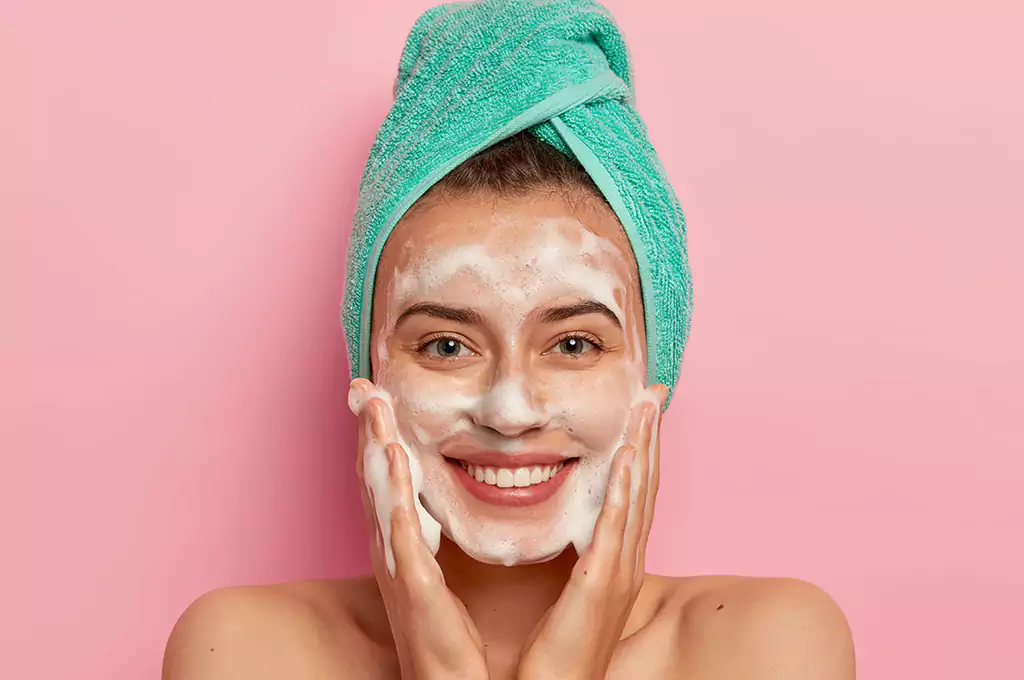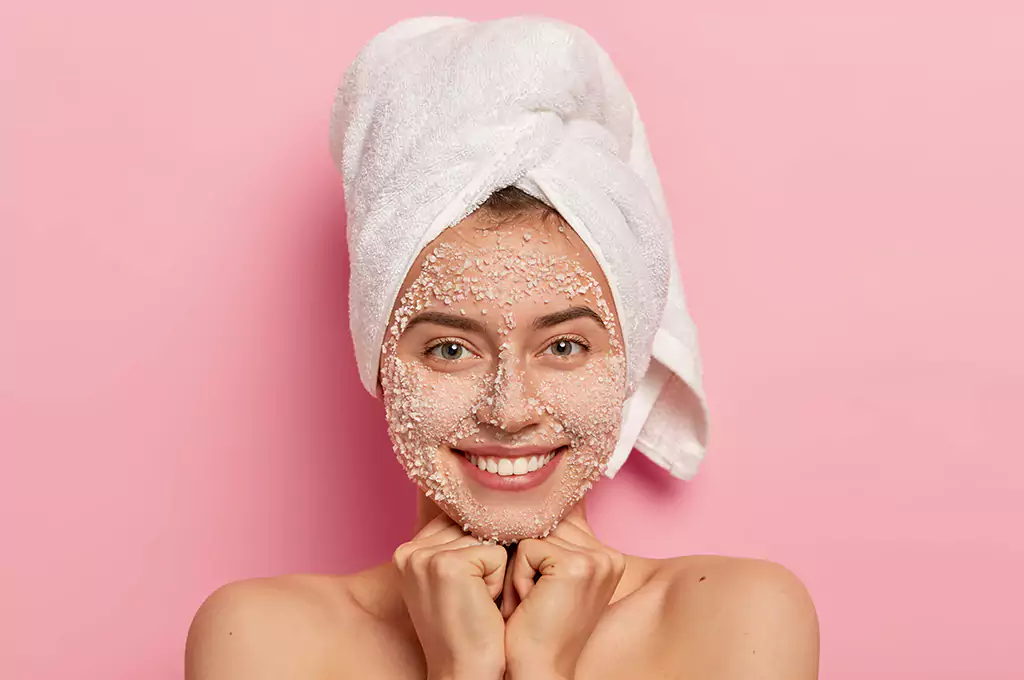
- Introduction
- Understanding Your Skin
- Steps for a Basic Skincare Routine
- Additional Steps to Enhance Your Skincare Routine
- Tips for Effective Skincare
- Conclusion
As we age, our skin becomes more susceptible to damage from the sun, pollution, and other environmental factors. Developing a consistent skincare routine is essential to combat these effects and keep your skin looking healthy and radiant. In this article, we’ll guide you through creating an effective skincare routine to help you achieve your best skin yet.
Introduction
Your skin is the largest organ in your body, and it’s essential to take care of it just as you would any other part of your body. Skincare is not just about looking good; it’s about keeping your skin healthy and protecting it from the harmful effects of the environment. Developing a consistent skincare routine is the first step to achieving healthy, glowing skin.
Understanding Your Skin
Before developing an effective skincare routine, you should know the skin types and their characteristics, and you must especially understand your skin type and unique needs. There are five main skin types: normal, oily, dry, combination, and sensitive. To identify your skin type, wash your face and let it dry for an hour, then check the areas around your nose, forehead, and chin.
If your skin is dry, it may feel tight and look flaky or dull. Oily skin may appear shiny, and you may experience breakouts. Combination skin may be oily in some areas, such as the T-zone, and dry in others. Normal skin is balanced and doesn’t have any significant issues. Sensitive skin may be easily irritated and react to specific ingredients or products.
Once you have identified your skin type, it’s essential to understand your skin concerns. Do you have fine lines and wrinkles? Are you prone to breakouts? Do you have dark spots or hyperpigmentation? Understanding your skin concerns will help you choose the right products for your skincare routine.
Steps for a Basic Skincare Routine
A basic skincare routine consists of three essential steps: cleansing, toning, and moisturizing. These steps are the foundation of a good skin care regimen and should be done twice a day, in the morning and at night.
Cleansing

Cleansing is the first step in any skincare routine. It involves using a gentle cleanser to remove dirt, oil, and impurities from the skin. Cleansing helps to unclog pores and prevent breakouts. When choosing a cleanser, it’s essential to choose one that is gentle and appropriate for your skin type. If you have an oily skin type, choose a foaming cleanser to help remove excess oil. If you have dry or sensitive skin, a cream or lotion cleanser may be more suitable.
To cleanse your face, wet your skin with warm water and apply a small amount of cleanser to your fingertips. Gently massage the cleanser into your skin in circular motions, paying particular attention to your forehead, nose, and chin. Rinse your face thoroughly with warm water and pat dry with a clean towel.
Toning
The second step in a basic skincare routine is toning. Toning helps to remove any remaining impurities from the skin and prepares it for the next step in your routine. Toners also help to balance the pH of your skin, which can help to prevent breakouts and improve the overall appearance of your skin. This step, especially, is one of the most important steps in the skincare routine for oily skin.
When choosing a toner, it’s essential to choose one appropriate for your skin type. If you have oily skin, you may choose a toner that contains salicylic acid or witch hazel, which can help control oil production. If you have dry or sensitive skin, a toner that contains hydrating ingredients like glycerin or hyaluronic acid may be more suitable.
To apply toner, pour a small amount onto a cotton pad and swipe it over your face, avoiding the eye area.
Moisturizing
The final step in a basic skincare routine is moisturizing. Moisturizing helps hydrate the skin and prevent dryness, leading to premature aging and other skin problems. Moisturizers also help create a barrier on the skin, protecting it from environmental damage.
When choosing a moisturizer, it’s essential to choose one that is appropriate for your skin type. If you have oily skin, you may want to choose a lightweight, oil-free moisturizer. If you have dry skin, a richer, more hydrating moisturizer may be more suitable.
To apply moisturizer, apply a small amount to your face and neck, gently massaging it using circular motions.
Additional Steps to Enhance Your Skincare Routine
In addition to the basic skincare routine, there are other steps that you can take to enhance your skincare regimen. These steps can help to address specific skin concerns and provide additional benefits to your skin.
Exfoliating

Exfoliating is an essential step in any skincare routine. It helps to remove dead skin cells and impurities from the surface of your skin, revealing a brighter and smoother complexion. However, it’s important not to over-exfoliate, as this can cause irritation and damage your skin.
There are two types of exfoliation: physical and chemical. Physical exfoliation involves using a scrub or brush to physically remove dead skin cells, while chemical exfoliation involves using acids to dissolve the bonds between dead skin cells.
If you have sensitive skin, it’s best to stick to a gentle physical exfoliant. Look for products with small particles, such as sugar or oatmeal, and massage the product into your skin in gentle circular motions. For those with oily or acne-prone skin, a chemical exfoliant with salicylic acid can effectively remove excess oil and unclog pores.
Applying facial masks
Facial masks are a great way to boost your skin’s hydration and nutrients. There are many different types of masks available, including clay masks, sheet masks, and overnight masks. Clay masks are great for oily or acne-prone skin, as they help to absorb excess oil and unclog pores. Sheet masks are a quick and easy way to hydrate and brighten your skin, while overnight masks provide deep hydration and repair while you sleep.
When applying a mask, follow the instructions on the packaging. Most masks should be left on for 10-15 minutes before being rinsed off with warm water. Use a mask 1-2 times a week for best results.
Using facial oils
Facial oils are a great addition to any skincare routine, especially for dry or mature skin. They help to lock in moisture and nourish your skin with vitamins and antioxidants. Some popular facial oils include rosehip oil, jojoba oil, and argan oil.
To use a facial oil, apply a few drops to your face and neck after cleansing and toning and before applying your moisturizer. Gently massage the oil into your skin using upward motions.
Tips for Effective Skincare
Consistency is key
Consistency is one of the most important things to remember regarding skincare. Develop a routine that works for you and stick to it. It can take time to see results, so be patient and don’t give up if you don’t see immediate improvement.

Apply products in the proper order
The order in which you apply your skincare products is essential to ensure maximum effectiveness. Generally, start with the thinnest consistency products and work your way up to the thickest. For example, start with your toner, apply your serum, and then your moisturizer.
Avoid harmful ingredients
Be mindful of the ingredients in your skincare products and avoid any that may be harmful to your skin or the environment. Some common harmful ingredients to avoid include parabens, sulfates, and fragrances.
Protect your skin from the sun
Sun damage can cause premature aging and increase your risk of skin cancer. Protect your skin by wearing sunscreen with at least SPF 30 every day, even on cloudy days. Wear protective clothing, such as a hat and sunglasses, and seek shade during peak sun hours.
Common Skincare Mistakes to Avoid

As important as it is to know what steps to take for a proper skincare routine, it is also crucial to understand the common mistakes to avoid. Here are some mistakes to steer clear of to achieve a healthy and glowing complexion:
Over-exfoliating: Exfoliation helps to remove dead skin cells, but over-exfoliating can cause irritation, redness, and even breakouts. Exfoliating once or twice a week is recommended, depending on your skin type.
Skipping SPF: Sun protection is essential to prevent skin damage and premature aging caused by UV rays. Applying sunscreen with at least SPF 30 is essential, even on cloudy days.
Using products that aren’t right for your skin type: It’s crucial to choose products formulated for your skin type. Using too harsh or heavy products for your skin can cause irritation, breakouts, or dryness.
Using too many products: While having a proper skincare routine is essential, too many products can overwhelm and irritate your skin. Stick to the basics and choose the best products for your skin type.
Conclusion
Developing a consistent skincare routine is essential for healthy and glowing skin. By understanding your skin type and concerns, you can choose the right products and steps to achieve your desired results. Remember to be consistent with your routine, avoid harmful ingredients, and protect your skin from the sun. You can achieve your best complexion by avoiding common skincare mistakes and following these tips.







